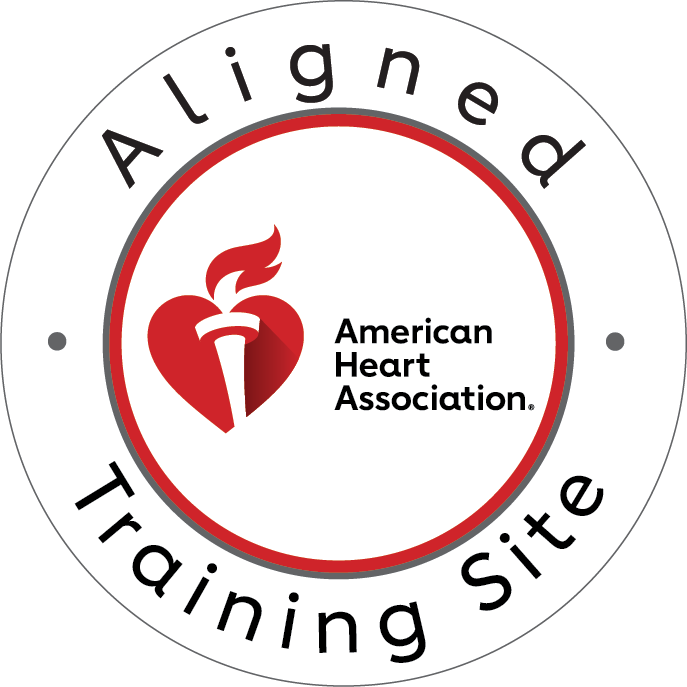Introduction
In the fast-paced world of healthcare, proficiency in Basic Life Support (BLS) techniques is not just a skill; it’s a vital responsibility. Whether you’re a seasoned healthcare professional or someone just starting their journey in the medical field, maintaining certification in BLS is crucial for saving lives during emergencies.
The American Heart Association (AHA) BLS Renewal program stands as a cornerstone in ensuring healthcare providers are equipped with the latest techniques and protocols to respond effectively to cardiac and respiratory emergencies. However, simply renewing your certification isn’t enough; it’s equally essential to steer clear of common errors that could compromise your ability to deliver life-saving care.
Overview of AHA BLS Renewal
The AHA BLS Renewal program is designed to update healthcare providers on the latest guidelines and best practices in resuscitation. It serves as a refresher course for individuals who have previously completed their BLS certification and need to renew it to maintain their qualifications.
Importance of Avoiding Common Errors
While the BLS Renewal course reinforces essential skills, it’s not immune to pitfalls. Common errors, if left unchecked, can erode the efficacy of your response during critical moments. These errors range from minor deviations in technique to more significant misunderstandings of protocols, all of which can have life-altering consequences.
Purpose of the Article
This article aims to delve into the dos and don’ts of AHA BLS Renewal, providing valuable insights to help healthcare professionals navigate the renewal process successfully. By understanding these key principles and avoiding common errors, practitioners can enhance their preparedness to handle cardiac and respiratory emergencies with confidence and proficiency.
Understanding AHA BLS Renewal
What is AHA BLS Renewal?
AHA BLS Renewal is a comprehensive program offered by the American Heart Association, tailored for healthcare professionals who require recurrent training in Basic Life Support techniques. It serves as a means of refreshing and updating participants’ knowledge and skills in cardiopulmonary resuscitation (CPR), automated external defibrillator (AED) use, and other essential aspects of emergency cardiovascular care.
Who Needs to Renew BLS Certification?
Healthcare providers across various disciplines, including but not limited to physicians, nurses, paramedics, emergency medical technicians (EMTs), and respiratory therapists, are required to maintain valid BLS certification. This ensures that individuals involved in patient care are proficient in responding to cardiac and respiratory emergencies promptly and effectively.
Frequency of Renewal
The frequency of BLS certification renewal typically depends on institutional requirements and regulatory standards. However, the American Heart Association recommends renewing BLS certification every two years to ensure healthcare providers remain up-to-date with the latest guidelines and protocols.
Benefits of BLS Renewal
Renewing BLS certification offers several benefits, including:
- Enhanced Competence: Regular training and renewal reinforce essential skills, increasing healthcare providers’ confidence and competence in responding to emergencies.
- Improved Patient Outcomes: Proficient BLS skills can significantly impact patient outcomes, increasing the likelihood of survival and minimizing the risk of complications during cardiac and respiratory emergencies.
- Professional Development: BLS renewal demonstrates a commitment to ongoing professional development and excellence in patient care, enhancing career prospects and opportunities for advancement.
- Legal and Regulatory Compliance: Maintaining valid BLS certification ensures compliance with institutional policies, regulatory requirements, and professional standards of practice.
By understanding the significance of AHA BLS Renewal and its role in maintaining proficiency in life-saving techniques, healthcare professionals can approach the renewal process with clarity and purpose, ultimately benefiting both themselves and the patients they serve.
Dos of AHA BLS Renewal
Stay Updated with Guidelines
- Regularly Review Guidelines: Stay informed about updates and revisions to BLS guidelines issued by organizations such as the American Heart Association. These updates often reflect the latest evidence-based practices and recommendations for resuscitation.
- Utilize Online Resources: Take advantage of online resources provided by reputable organizations to access training materials, practice scenarios, and educational videos that align with current guidelines.
Practice Regularly
- Simulate Realistic Scenarios: Engage in regular practice sessions that simulate real-life cardiac and respiratory emergencies. This allows you to reinforce muscle memory and hone your skills in a controlled environment.
- Participate in Mock Drills: Participate in mock drills and simulations conducted within healthcare settings to enhance teamwork, communication, and coordination during resuscitation efforts.
Attend Refresher Courses
- Schedule Timely Renewal Courses: Plan and schedule BLS renewal courses well in advance of your certification expiration date. This ensures ample time for completion and minimizes the risk of certification lapses.
- Participate in Hands-On Training: Choose renewal courses that offer hands-on training and interactive learning experiences, as these methods are highly effective for reinforcing key concepts and skills.
Understand Changes in Protocols
- Review Updated Algorithms: Familiarize yourself with any changes or updates to resuscitation algorithms, including modifications to compression rates, ventilation techniques, and sequence of interventions.
- Seek Clarification as Needed: Don’t hesitate to seek clarification from instructors or peers if you encounter uncertainties or discrepancies regarding protocol changes. It’s essential to ensure clarity and accuracy in your understanding of current guidelines.
Maintain Documentation
- Keep Detailed Records: Maintain accurate records of BLS certification renewal dates, training sessions attended, and any additional continuing education activities related to resuscitation.
- Provide Documentation as Required: Be prepared to provide documentation of BLS renewal certification to employers, regulatory agencies, or credentialing bodies upon request. Keeping thorough records facilitates compliance and ensures accountability in maintaining certification status.
By adhering to these dos of AHA BLS Renewal, healthcare professionals can optimize their training experience, stay abreast of current guidelines, and maintain proficiency in life-saving techniques essential for emergency cardiovascular care.
Don’ts of AHA BLS Renewal
Procrastination
- Avoid Delaying Renewal: Procrastinating renewal can lead to lapses in certification, potentially jeopardizing your ability to respond effectively to emergencies. Prioritize scheduling and completing BLS renewal courses promptly.
- Plan Ahead: Anticipate upcoming renewal deadlines and allocate sufficient time for course registration, preparation, and attendance. Procrastination increases the risk of a last-minute rush and may limit available course options.
Ignoring Changes in Guidelines
- Stay Informed: Don’t overlook updates or revisions to BLS guidelines. Ignoring changes in protocols and recommendations can result in outdated practices that compromise the quality of patient care.
- Regularly Review Updates: Make it a habit to regularly review updates to BLS guidelines issued by reputable organizations. Stay informed about changes in compression rates, ventilation techniques, and other critical aspects of resuscitation.
Skipping Refresher Courses
- Value Continuous Learning: Recognize the importance of ongoing education and skill reinforcement in BLS. Avoid the temptation to skip renewal courses or postpone participation due to perceived time constraints or competing priorities.
- Commit to Renewal: Prioritize participation in BLS renewal courses as an integral component of professional development and maintaining certification requirements. Investing time and effort in renewal courses is essential for sustaining proficiency in life-saving techniques.
Failing to Practice Regularly
- Maintain Skills Through Practice: Don’t underestimate the significance of regular practice in BLS proficiency. Failing to practice regularly can lead to skill degradation and diminish your ability to respond effectively during emergencies.
- Schedule Practice Sessions: Incorporate regular practice sessions into your routine to reinforce muscle memory and maintain competency in BLS techniques. Utilize practice manikins, simulation scenarios, or hands-on drills to simulate real-life resuscitation scenarios.
Overconfidence
- Remain Humble: Guard against complacency and overconfidence in your BLS skills. Even experienced healthcare providers can benefit from ongoing training and skill enhancement to ensure readiness for diverse emergencies.
- Embrace Continuous Improvement: Adopt a mindset of continuous improvement and humility in your approach to BLS. Acknowledge areas for growth and actively seek opportunities for further education, training, and skill development.
By avoiding these common pitfalls in AHA BLS Renewal, healthcare professionals can uphold the integrity of their certification, enhance their preparedness for emergency response, and ultimately contribute to improved patient outcomes.
V. Common Errors to Avoid
Incorrect Compression Depth and Rate
- Depth of Compressions: One common error is inadequate compression depth, which may fail to generate sufficient blood flow to vital organs. Conversely, excessive compression depth can cause injury or reduce blood flow efficiency.
- Compression Rate: Another error is maintaining an incorrect compression rate. Deviating from the recommended rate of 100 to 120 compressions per minute can compromise the effectiveness of chest compressions, impacting patient outcomes.
Inadequate Ventilation Techniques
- Improper Ventilation: Failure to provide adequate ventilation during CPR can impair oxygenation and ventilation, reducing the likelihood of successful resuscitation. Incorrect technique or inadequate ventilation volume may contribute to hypoxia and worsen patient outcomes.
Misinterpretation of Algorithms
- Algorithm Misinterpretation: Misinterpreting BLS algorithms or failing to follow the appropriate sequence of interventions can impede the delivery of timely and effective care. Missteps in algorithm interpretation may result in delays or errors in treatment administration.
Failure to Communicate Effectively
- Lack of Communication: Ineffective communication among team members during resuscitation efforts can lead to confusion, errors, and suboptimal coordination of care. Clear and concise communication is essential for facilitating teamwork and optimizing patient outcomes.
Not Adhering to Team Dynamics
- Team Coordination: Neglecting to adhere to established team dynamics and roles during resuscitation can hinder the efficiency and effectiveness of the response. Failure to collaborate, delegate tasks, or provide support to team members may compromise patient care.
By being aware of these common errors and actively working to avoid them, healthcare professionals can enhance their proficiency in BLS techniques, improve their readiness to respond to emergencies, and ultimately contribute to better patient outcomes.
VI. Tips for Success
Utilize Feedback from Instructors
- Seek Feedback: Actively seek feedback from BLS instructors during training sessions or renewal courses. Incorporate constructive criticism and suggestions for improvement to enhance your skills and technique.
Collaborate with Peers
- Engage in Peer Learning: Collaborate with peers and colleagues to practice BLS techniques and share knowledge and experiences. Peer learning provides valuable opportunities for skill reinforcement, mutual support, and collective learning.
Stay Calm and Focused During Testing
- Manage Stress: Maintain composure and focus during BLS certification testing or renewal assessments. Stress management techniques, such as deep breathing or visualization, can help you remain calm and perform optimally under pressure.
Continuously Seek Improvement
- Embrace Lifelong Learning: Adopt a mindset of continuous improvement and lifelong learning in BLS. Stay curious, stay updated on advancements in resuscitation science, and actively seek opportunities for further education and skill development.
Seek Help When Needed
- Don’t Hesitate to Ask for Assistance: If you encounter challenges or uncertainties during BLS training or renewal courses, don’t hesitate to ask for assistance from instructors, peers, or mentors. Clarifying doubts and seeking guidance can enhance your understanding and confidence in BLS techniques.
By implementing these tips for success, healthcare professionals can optimize their BLS training experience, strengthen their skills, and maintain readiness to respond effectively to cardiac and respiratory emergencies. Commitment to continuous improvement and proactive engagement in training and skill development are key to ensuring proficiency in life-saving techniques.
Conclusion
In conclusion, navigating the process of AHA BLS renewal involves more than just completing a course; it requires a commitment to excellence, ongoing learning, and the avoidance of common errors that can compromise patient care. By adhering to the dos and don’ts outlined in this article, healthcare professionals can optimize their BLS training experience, maintain proficiency in life-saving techniques, and enhance their readiness to respond effectively to cardiac and respiratory emergencies.
Staying updated with guidelines, practicing regularly, attending refresher courses, understanding changes in protocols, and maintaining documentation are essential components of successful BLS renewal. Additionally, avoiding common errors such as incorrect compression depth and rate, inadequate ventilation techniques, misinterpretation of algorithms, failure to communicate effectively, and disregarding team dynamics is crucial for delivering high-quality resuscitation care.
By implementing tips for success, including utilizing feedback from instructors, collaborating with peers, staying calm and focused during testing, continuously seeking improvement, and seeking help when needed, healthcare professionals can further enhance their BLS proficiency and contribute to better patient outcomes.
Enroll in BLS Certification in CPR Louisville
Take the first step towards becoming a proficient responder in cardiac and respiratory emergencies by enrolling in BLS certification in Louisville today. CPR Louisville offers comprehensive training programs tailored to healthcare professionals, equipping you with the knowledge and skills needed to save lives effectively. Whether you’re seeking CPR certification in Louisville or BLS renewal in Louisville, our courses are designed to meet your needs and exceed your expectations. Don’t wait until it’s too late – enroll now and make a difference in your community with CPR Louisville.




